Disclosure: This article contains affiliate links. We may earn a commission from purchases at no extra cost to you, which helps our travel content.
When I first arrived in Yamoussoukro, Côte d'Ivoire's political capital, I stood slack-jawed before the Basilica of Our Lady of Peace—a structure so magnificently incongruous it seemed to have been plucked from Vatican City and dropped into the West African savanna. As an instructional designer with a passion for documenting design principles across cultures, I'd seen photos, but nothing prepared me for the reality of this architectural marvel rising from the landscape like a fever dream. This hidden gem offers photographers an extraordinary canvas of contrasts: neoclassical grandeur against tropical skies, geometric precision amid organic landscapes, and a fascinating visual narrative of post-colonial identity.
The Basilica: Capturing Africa's Vatican Doppelgänger
The Basilica of Our Lady of Peace isn't just impressive—it's superlative. Larger than St. Peter's in Rome (though with slightly less internal space to maintain Vatican supremacy), this colossal structure dominates Yamoussoukro's skyline with its 518-foot dome and capacity for 18,000 worshippers.
As a photographer, timing is everything here. I arrived 30 minutes before sunrise on my second day, setting up my travel tripod on the eastern side to capture the dome bathed in golden light. The basilica's marble exterior transforms from cool white to warm honey as the sun climbs, creating a magical 20-minute window for truly spectacular shots.
During my week in Yamoussoukro, I discovered that late afternoon (around 4:30-5:30 PM) offers another prime shooting opportunity, when the westering sun casts dramatic shadows across the colonnades and stained glass windows glow from within. For interior shots, midday provides enough light to illuminate the vast space without requiring extremely high ISO settings on your camera.
Bring a wide-angle lens—you'll need it. My wide-angle zoom became my constant companion, though I occasionally switched to my 50mm for detail work on the intricate stained glass.
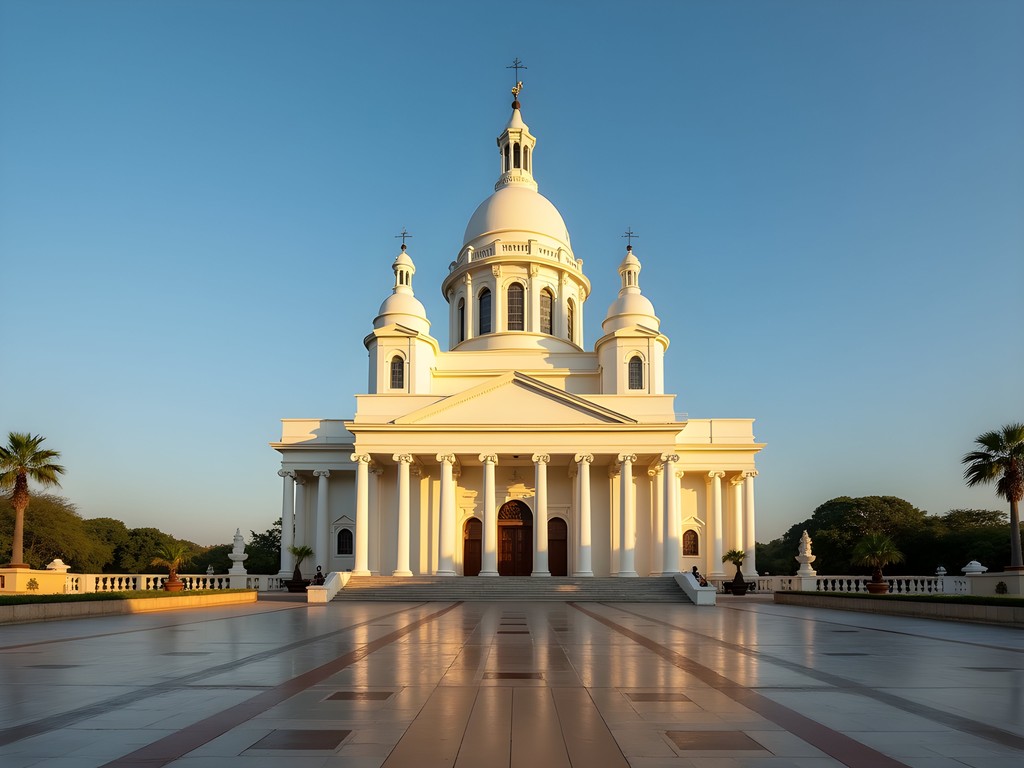
💡 Pro Tips
- Visit the Basilica early morning (6-7 AM) or late afternoon (4:30-5:30 PM) for the best light
- Bring a polarizing filter to manage reflections on the marble surfaces
- Tripods are allowed outside but require special permission inside
Navigating Photography Permissions and Cultural Etiquette
Photographing in Yamoussoukro requires navigating a web of permissions, cultural considerations, and occasional bureaucratic hurdles. The basilica allows photography outside without restrictions, but interior photography requires a special permit (€10 when I visited) and prohibits flash. Other government buildings, including the Presidential Palace, are strictly off-limits for photography—a rule enforced by ever-present security personnel.
I learned this lesson the hard way when my casual smartphone snap of the palace gates earned me a stern lecture and a brief equipment inspection. Save yourself the anxiety by keeping your camera stowed when near government facilities.
When photographing local residents, always seek permission first. A smile, a gesture toward your camera, and a friendly "Je peux?" (May I?) goes a long way. Most Ivorians I met were gracious about being photographed, but offering to show them the resulting images on your camera's LCD screen builds goodwill and transforms the interaction from extraction to exchange.
I keep a small portable printer in my bag for longer trips, which allows me to give physical prints to people who've kindly allowed me to photograph them. In Yamoussoukro, this simple gesture opened doors to incredible hospitality and deeper cultural connections.
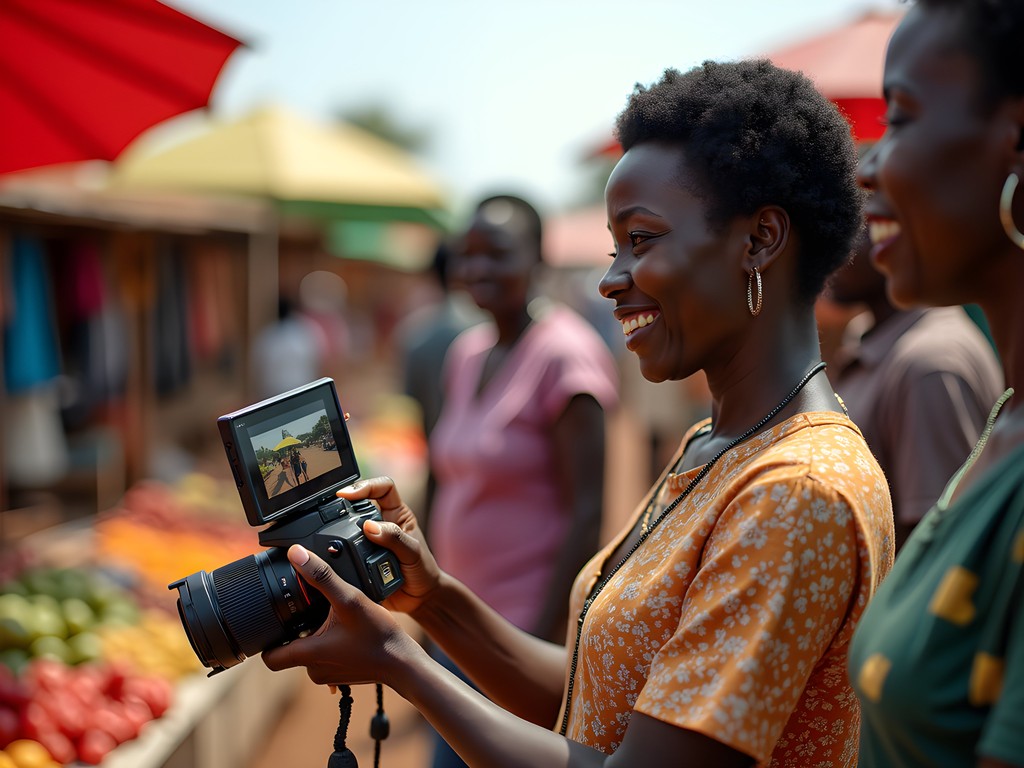
💡 Pro Tips
- Learn basic French phrases for asking permission to photograph people
- Avoid photographing military installations, checkpoints, or government buildings
- Carry small gifts or a portable printer to thank subjects
Beyond the Basilica: Hidden Architectural Gems
While the basilica dominates Yamoussoukro's architectural landscape, the city offers numerous other photographic treasures that most visitors overlook. The Fondation Félix Houphouët-Boigny, with its striking modernist lines and expansive reflecting pools, provides a fascinating counterpoint to the basilica's neoclassical excess. Visit in late afternoon when the low sun creates dramatic shadows across its geometric façades.
The Grand Mosque, though smaller than the basilica, offers equally compelling photographic opportunities with its elegant minarets and intricate geometric patterns. As a non-Muslim visitor, I was permitted to photograph the exterior and courtyard but not the interior prayer spaces. Approaching the imam with respect and asking permission resulted in an impromptu tour of accessible areas.
Perhaps my favorite discovery was the École des Beaux-Arts, where contemporary Ivorian artists train in a campus of striking brutalist buildings from the 1970s. The contrast between the severe concrete structures and the vibrant student artwork creates compelling visual narratives about tradition and innovation in African design.
For these less-visited locations, I relied heavily on my mirrorless camera paired with a versatile zoom lens that allowed me to quickly adapt to different shooting scenarios without constantly changing lenses in dusty conditions.
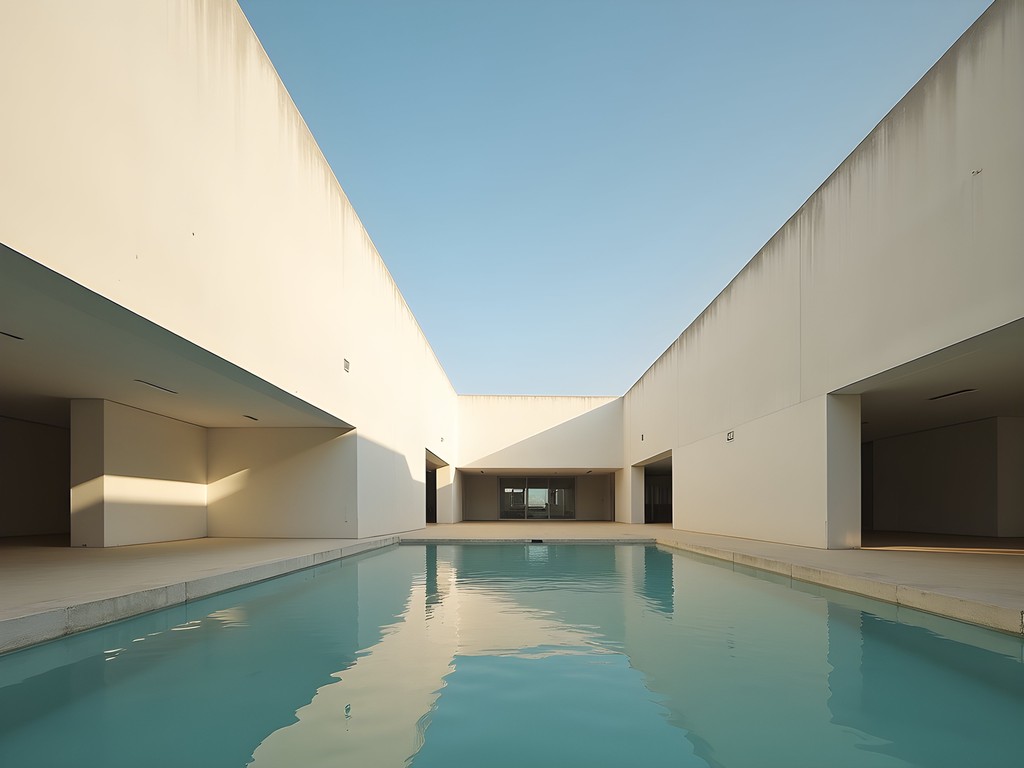
💡 Pro Tips
- Visit the Fondation Félix Houphouët-Boigny in late afternoon for dramatic shadows
- Request permission before photographing the Grand Mosque
- Bring lens cleaning supplies as dust can be an issue, especially during Harmattan season
Technical Challenges: Mastering Light and Contrast
Yamoussoukro presents unique technical challenges for photographers. The harsh equatorial light creates extreme contrast, particularly between 10 AM and 3 PM when shadows disappear and highlights blow out easily. I quickly learned to embrace the golden hours and shoot during early morning and late afternoon whenever possible.
During my winter visit, I encountered the Harmattan—a dry, dusty wind from the Sahara that creates a persistent haze. While frustrating for clarity, this atmospheric condition produces ethereal, diffused light that softens the basilica's hard edges and creates moody, atmospheric images when shooting at distance. My polarizing filter proved invaluable for cutting through haze and managing reflections on the basilica's marble surfaces.
The extreme brightness also meant I rarely left my hotel room without my neutral density filter, which allowed me to shoot at wider apertures even in bright conditions and create long exposures to blur moving crowds around static architectural elements.
For interior photography, particularly inside the basilica's vast nave, I found myself constantly balancing between acceptable ISO noise and shutter speeds slow enough to require stabilization. The stabilized lens I brought saved countless shots when tripods weren't permitted inside.
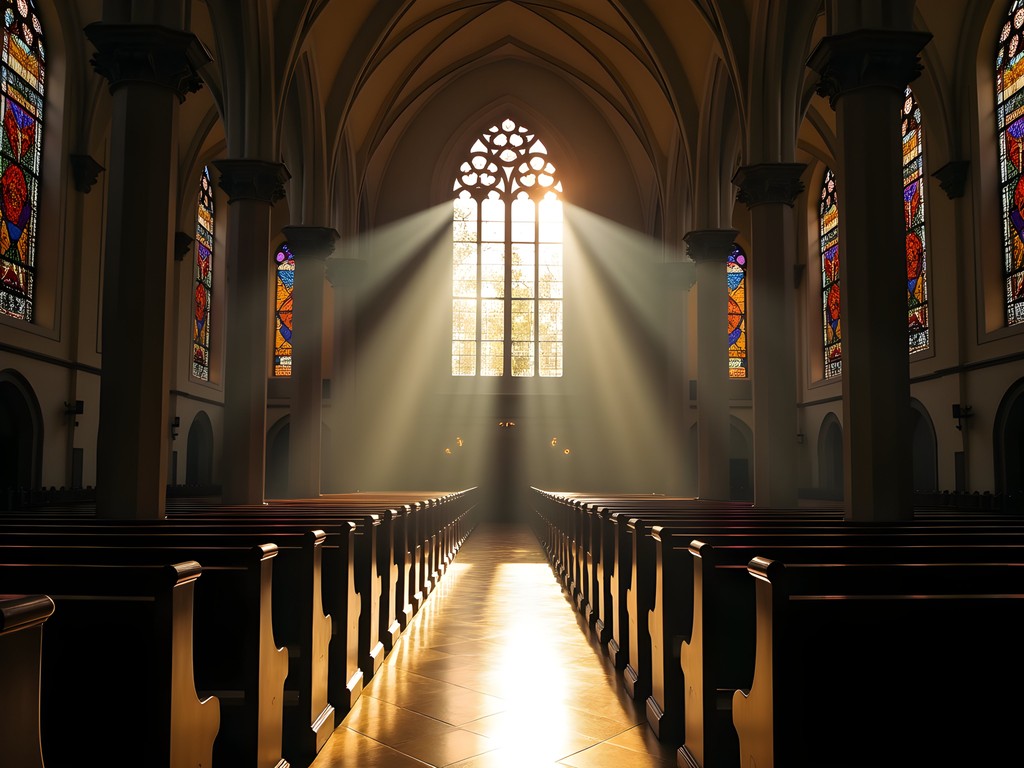
💡 Pro Tips
- Use a polarizing filter to cut through Harmattan haze and manage reflections
- Bracket exposures when shooting high-contrast scenes like the basilica against bright sky
- Consider a monopod when tripods aren't permitted in interior spaces
Practical Logistics for the Photography Traveler
Yamoussoukro isn't on most tourist itineraries, which means infrastructure can be limited but photography opportunities more authentic. I based myself at Hôtel Président, a mid-range option with reliable electricity (crucial for charging camera batteries) and decent Wi-Fi for backing up images each evening to my portable hard drive.
Getting around the city is straightforward but requires planning. I hired a local driver through my hotel for about $40 per day, which gave me flexibility to chase light conditions and revisit locations at different times. For photographers carrying substantial gear, this is far preferable to shared taxis or walking in the heat.
Speaking of gear, security is generally good, but I avoided displaying expensive equipment unnecessarily. My camera backpack doesn't scream 'expensive camera gear' and includes lockable zippers for added peace of mind when moving through crowded areas.
Cellular data is surprisingly reliable in Yamoussoukro. I purchased a local SIM card at the Orange store near the central market (bring your passport) for about $10, which provided ample data for navigation and research throughout my week-long stay.
Finally, don't underestimate the physical demands of architectural photography in tropical heat. I typically shot from 6-10 AM, rested during midday heat, then resumed from 3:30-6:30 PM. Staying hydrated is crucial—I carried a large insulated water bottle everywhere.

💡 Pro Tips
- Hire a dedicated driver to maximize shooting time at different locations
- Purchase a local SIM card for navigation and on-the-go research
- Plan your shooting schedule around the intense midday heat
Final Thoughts
Photographing Yamoussoukro feels like documenting an alternate reality—one where Africa's largest church stands nearly empty while locals zip past on motorbikes, barely glancing up at its colossal dome. The city's architectural extremes tell a complex story about post-colonial identity, political legacy, and the intersection of Western religious iconography with African context.
As I packed away my gear on my final evening, watching the sunset bathe the basilica in golden light one last time, I reflected on how this overlooked destination had transformed my understanding of architectural photography. Yamoussoukro taught me to look beyond the obvious shot, to seek the human stories within monumental structures, and to find beauty in incongruity.
For photographers willing to venture beyond Africa's well-trodden safari circuits and coastal resorts, Yamoussoukro offers a visual feast that remains largely uncaptured by the masses. Come with patience, respect, and plenty of memory cards—this architectural marvel deserves to be seen through many lenses, including yours.
✨ Key Takeaways
- The best photography happens during golden hour (early morning and late afternoon) when the harsh equatorial light softens
- Always seek permission before photographing people or religious sites, and consider bringing a portable printer to share images
- Look beyond the basilica to discover modernist gems, markets, and everyday scenes that tell Yamoussoukro's full story
📋 Practical Information
Best Time to Visit
November to February (dry season with less haze)
Budget Estimate
$80-120 per day including mid-range accommodation, transportation, and meals
Recommended Duration
4-7 days
Difficulty Level
Moderate
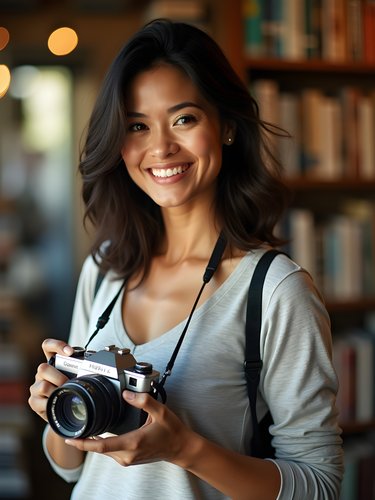
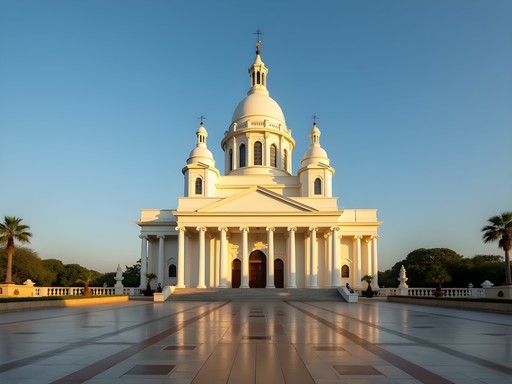
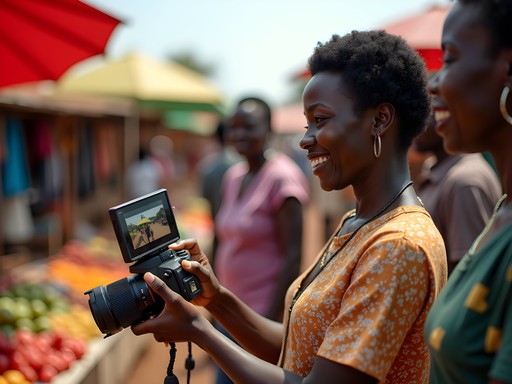
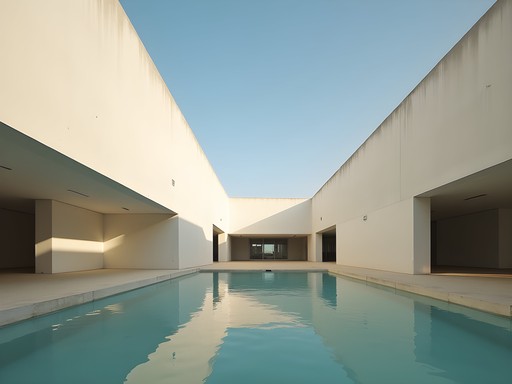
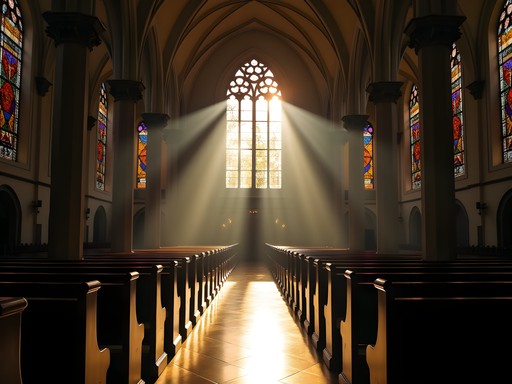
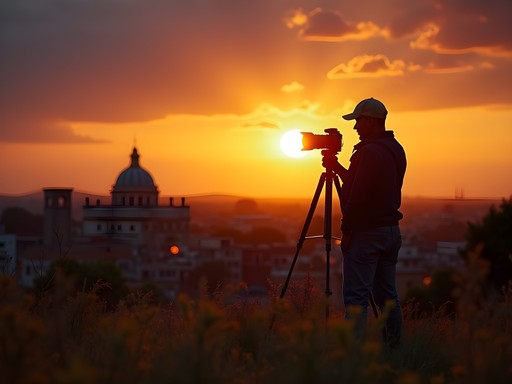


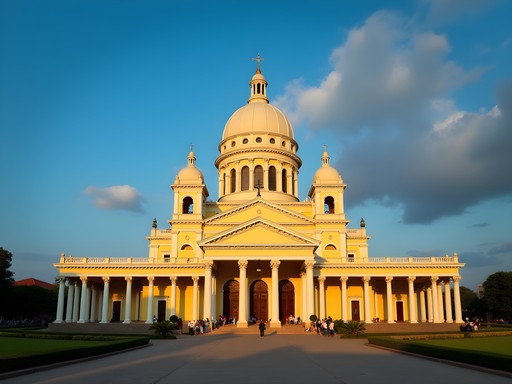







Comments
photo_enthusiast92
Your shot of the dome interior with the light streaming in is absolutely stunning! What lens did you use for that?
Maya Reyes
Thank you! That was with a 16-35mm wide angle at 16mm. The challenge was balancing the bright light from the windows with the darker interior.
AfricaExplorer
Stunning photos! That basilica is unreal.
Douglas Bradley
Maya, this is such a thoughtful piece on a truly overlooked architectural wonder. I visited Yamoussoukro last year and was equally stunned by the Basilica's scale and the contrast it creates with its surroundings. Your tips on dealing with the harsh midday light are spot on - I struggled with that too! I found my polarizing filter absolutely essential for managing reflections on those massive marble surfaces. Did you make it to the crocodile lake near the presidential palace? That juxtaposition of ultra-modern architecture with those ancient creatures was another fascinating photographic challenge. Your point about getting permission before photographing locals can't be emphasized enough - especially important in Côte d'Ivoire where many are still camera-shy after years of political tension.
Maya Reyes
Thanks Douglas! Yes, the crocodile lake was surreal - such a strange contrast to the formality of the surrounding architecture. And you're right about local sensitivities - I found that showing people the photos I'd taken of them on my camera screen helped build trust too.
wanderlust_emma
The Basilica looks amazing in your photos! How crowded was it when you visited?
Maya Reyes
That's the strange thing about it - despite being enormous, it was nearly empty! A few tourists and some locals praying, but nothing like you'd expect for such a massive structure. Made for clean architectural shots though!
globetrekker55
Those stained glass windows look incredible! Did you need special permission to photograph inside the Basilica?
Maya Reyes
Yes, you definitely need permission for interior photos! There's an office near the entrance where you can request a photography permit. It costs about 5000 CFA (~$8) and they're pretty strict about tripods.
wanderlust_emma
Those dome shots are incredible! The scale is mind-blowing.
Savannah Torres
Maya, this post brought back so many memories! I visited Yamoussoukro with my husband and kids last year, and explaining to my 8-year-old why there's a replica of St. Peter's Basilica in West Africa was quite the history lesson! Your lighting tips are spot on - that harsh midday sun was brutal for photos. We found the Presidential Palace grounds surprisingly photogenic too, though the security guards were very particular about where we could point our cameras. Did you get a chance to visit the crocodile lake? My kids still talk about it! I used my wide angle lens for most basilica shots which helped capture the scale without distortion.
Maya Reyes
Savannah! Always love hearing your family travel perspectives. Yes, I did visit the crocodile lake - such a surreal addition to the city's attractions! And completely agree about the Presidential Palace grounds - those geometric gardens are stunning. Security was definitely watching my every move there.
TravelWithKids22
Wait there are crocodiles too?? Adding this to my list immediately!
Savannah Torres
@TravelWithKids22 Yes! There's a lake with dozens of crocodiles near the Presidential Palace. They supposedly belonged to former President Houphouët-Boigny. Kids will love it but keep them close!
tripmood
Wow, the Basilica looks incredible! Did you have any issues using your camera inside? I've heard some religious sites can be strict about photography.
Maya Reyes
Thanks for asking! You're right to be cautious. Inside the Basilica, photography is allowed but no flash. Always check with the guides first, and I found being respectful (and sometimes tipping) goes a long way. The real challenge was capturing the scale of the place!
tripmood
That's super helpful! Planning a trip there next year so this is perfect timing.
beachzone
Just got back from Yamoussoukro last month and your photos capture it perfectly! The Basilica is even more mind-blowing in person than I expected. Did you have any trouble getting photography permits inside? I got turned away twice before finding the right office to get permission. Also that contrast between the massive church and the everyday life around it is wild - saw a guy selling phone chargers right outside those massive columns!
Maya Reyes
Thanks for reading, beachzone! The permit situation was definitely tricky - I actually mention that in the 'Photography Permissions' section. I found arriving early (before 9am) meant dealing with less bureaucracy. And yes, that juxtaposition is exactly what makes Yamoussoukro so fascinating!
beachzone
Totally missed that section! Early morning is smart - wish I'd known that trick before my third attempt 😅
photonut42
Great post! Did you have any issues with your camera equipment at security checkpoints? Planning to bring my full kit but worried about restrictions.
Maya Reyes
Thanks @photonut42! Security was fine with my equipment (2 bodies, 3 lenses) but they did check everything carefully. They're mainly concerned about professional video equipment, which requires permits. Just be respectful and explain you're a tourist, not commercial. Also, carrying gear in a non-flashy bag helps draw less attention.
coolmood
I've never been to Africa but this makes me want to go! How did you handle the language barrier? Is French enough to get by or should I learn some local phrases? The architecture looks amazing but I'm curious about the local food too - did you find any good spots to eat near the basilica?
Maya Reyes
French will definitely get you far in Yamoussoukro! For food, try Chez Julienne about 10 minutes from the basilica - amazing kedjenou (spicy chicken stew) and attieke (cassava couscous). The staff was super patient with my basic French. Learning 'merci' and 'bonjour' goes a long way!
Venture X
Premium card with 2X miles, $300 travel credit, Priority Pass